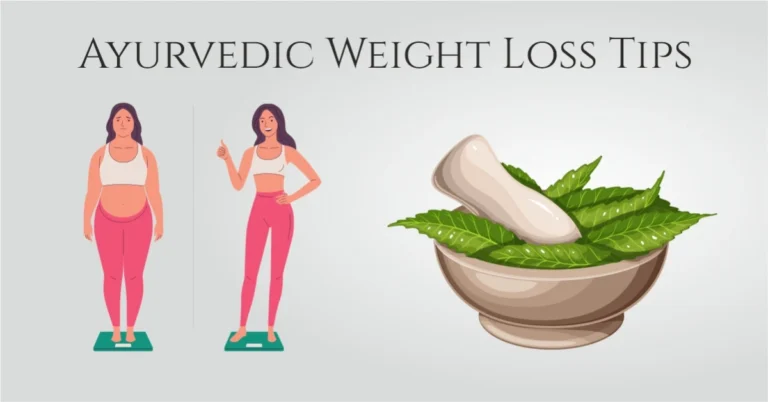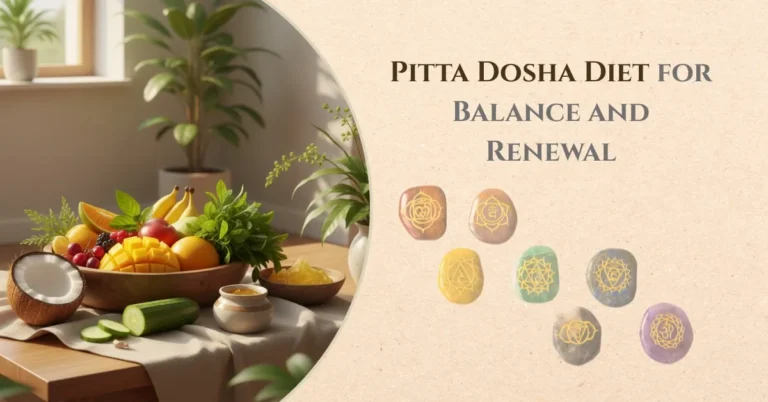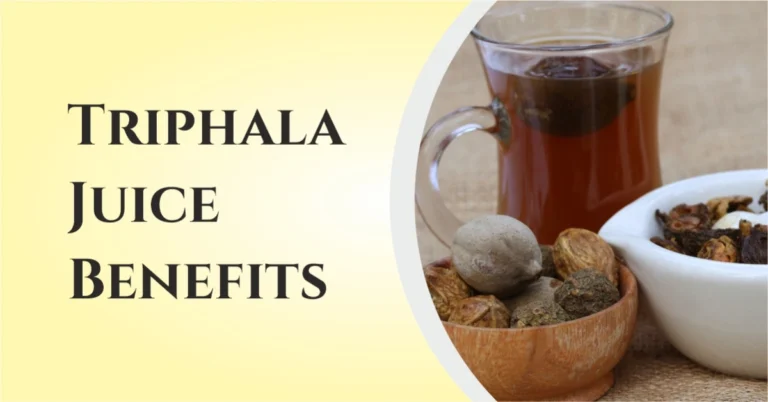What is Vata Dosha? Meaning, Symptoms, Imbalance & Treatment
When you ask “what is Vata?” or “what is Vaat?”, you are talking about one of the three Ayurveda doshas. In simple words, a dosha means the bio-energy that manages the body and mind. The dosha definition is “a governing principle” — something that controls functions like movement, digestion, or stability.
Ayurveda explains three doshas (also called dosha types): Vata, Pitta, and Kapha. Together, they are known as Tridosha. The Vata meaning comes from the Sanskrit root “Va”, which means to move. Just like air and space move everywhere, Vata is responsible for motion, circulation, breathing, and even thought processes. Without Vata, nothing can move inside the body.
Vata, Pitta, Kapha Meaning in Brief
| Dosha Type | Element Mix | Role in Body | Simple Traits |
|---|---|---|---|
| Vata | Air + Space | Controls movement & communication | Quick, light, active |
| Pitta | Fire + Water | Controls digestion & transformation | Sharp, focused, hot-tempered |
| Kapha | Water + Earth | Controls stability & structure | Calm, steady, strong |
Vata Dosha Meaning & Characteristics
The Vata Dosha meaning is directly linked to the qualities of air and space. It is light, dry, quick, cold, and always moving. Because of these traits, Vata shapes both the body and the mind in a unique way.
When Vata is balanced, a person feels energetic, creative, and alert. But when it becomes disturbed, the same traits turn into restlessness, dryness, anxiety, and irregular body functions. This is why knowing Vata personality, Vata prakriti, and Vata body type characteristics is important in Ayurveda.
Key Vata Traits
- Vata Personality: Creative, talkative, enthusiastic, but may get anxious or overthink easily.
- Vata Prakriti Characteristics: Slim frame, dry skin, cold hands and feet, quick movements, irregular appetite.
- Vata Body Type Characteristics: Light bones, sensitive digestion, fast speech, active mind, tendency to get tired quickly.
Symptoms of Vata Dosha Imbalance
When Vata becomes disturbed, its light, dry, and moving qualities show up as clear signals in the body and mind. These are commonly called Vata Dosha symptoms. Ayurveda explains that such changes are the first sign of an imbalance and, if ignored, can slowly turn into Vata Dosha diseases.
Signs You May Notice
- Vata Imbalance Symptoms: Irregular digestion, gas, constipation, dryness of skin and hair, disturbed sleep, anxiety, forgetfulness.
- Excess Vata Symptoms: Restlessness, joint pain, cracking sounds in bones, cold hands and feet, weight loss, overthinking.
- Vata Dosha Diseases (chronic stage): Arthritis, sciatica, insomnia, neurological disorders, constipation-related problems.
Vata Pitta & Vata Kapha Combination
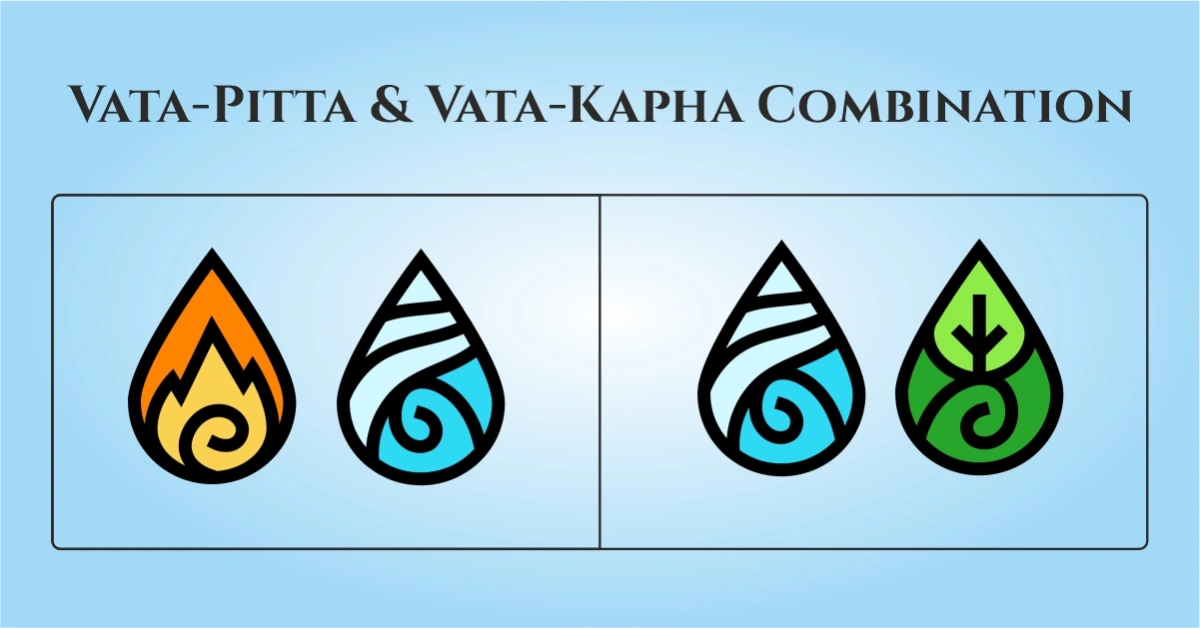
In Ayurveda, most people are not ruled by just one dosha. Instead, they carry a mix, such as Vata Pitta Dosha or Vata Kapha Dosha. These dual constitutions bring together traits of both energies, creating unique body types and health patterns. Understanding the Vata Pitta Kapha characteristics helps in finding balance through food, lifestyle, and remedies.
Dual Dosha Characteristics
| Dosha Mix | Key Characteristics | Common Challenges |
|---|---|---|
| Vata Pitta Dosha | Fast, sharp mind, active body, ambitious yet restless | Can face acidity, irritability, anxiety, dry skin |
| Vata Kapha Dosha | Calm yet energetic, good stamina, stable with bursts of creativity | Can face sluggish digestion, weight gain, joint stiffness |
| Vata Pitta Kapha (balanced mix) | Traits of all three doshas appear together; balanced energy when in harmony | If imbalanced, symptoms may overlap like dryness, heat, heaviness |
Causes of Vata Dosha Imbalance
Vata is sensitive and can get disturbed very easily. Ayurveda explains that the main triggers behind imbalance are linked to daily habits, weather shifts, and food choices. If these are ignored, the light and mobile nature of Vata goes out of control, leading to health problems.
Main Triggers
- Lifestyle Factors: Irregular sleep, overwork, too much travel, skipping meals, excess screen time, and high stress disturb Vata quickly.
- Seasonal Changes: Vata rises in cold, dry, and windy weather, especially during late autumn and early winter.
- Diet Causes: Eating too much dry, raw, cold, or spicy food and drinking excessive caffeine depletes moisture and aggravates Vata.
How to Balance & Control Vata Dosha
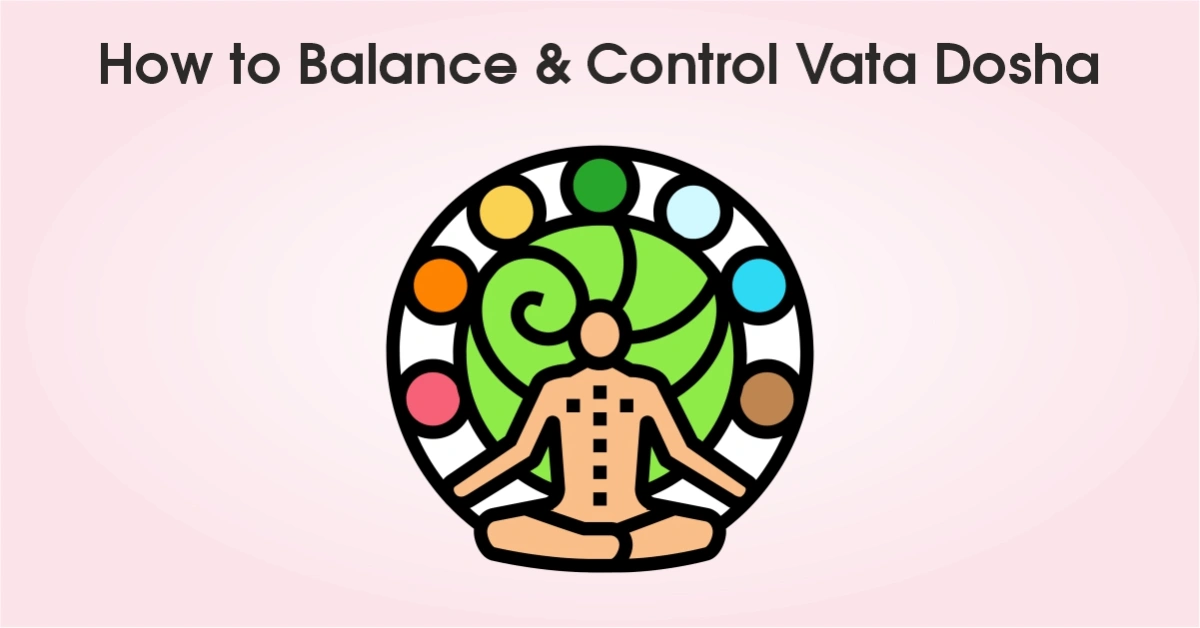
Ayurveda says that calming Vata is about creating stability, warmth, and routine. Since Vata is light, cold, and always moving, the best approach is to add grounding habits and nourishing foods. This process is often called achieving Vata balance. It focuses on lifestyle, diet, and natural remedies.
Simple Ways to Restore Balance
- How to Control Vata Dosha: Follow a regular daily routine, avoid late nights, and practice calming exercises like yoga and meditation.
- How to Balance Vata Dosha: Include warm, cooked, and oily foods; use sesame oil massage; stay away from cold, raw, or dry meals.
- How to Cure Vata Dosha (when disturbed): Gentle herbal teas, proper hydration, relaxation techniques, and consultation with an Ayurvedic practitioner help restore health.
Vata Dosha Treatment in Ayurveda
Ayurveda believes that healing Vata is about gentle nourishment and calming routines. Vata Dosha treatment is not a single medicine but a combination of diet, lifestyle, and natural therapies. The goal is to reduce dryness, coldness, and irregularity that Vata naturally brings. When done consistently, these steps become effective Vata Dosha remedies.
Ayurvedic Remedies & Herbs
- Home Remedies for Vata: Warm milk with a pinch of nutmeg, applying sesame oil before a bath, drinking ginger tea, and using ghee in meals.
- Herbs for Vata Dosha: Ashwagandha, Bala, Licorice (Yashtimadhu), and Shatavari are known to calm nerves, support digestion, and improve strength.
- General Vata Dosha Treatment: Oil massage (Abhyanga), steam therapy, eating regular meals, and practicing grounding yoga postures.
Vata Dosha Diet & Lifestyle
Food and daily habits play the biggest role in calming Vata. Since this dosha is naturally cold, dry, and light, the best way to support balance is through warmth, moisture, and grounding routines. Choosing the right Vata diet foods along with steady lifestyle practices makes a big difference in long-term health.
Foods & Lifestyle Tips
- Food for Vata Dosha: Eat freshly cooked, warm meals with healthy oils like ghee or sesame oil. Soups, stews, and porridge are ideal.
- Foods that Reduce Vata Dosha: Sweet fruits, soaked nuts, rice, wheat, dairy, root vegetables, and cooked lentils help reduce dryness and irregular digestion.
- Vata Pacifying Foods: Favor naturally sweet, sour, and salty tastes while avoiding bitter, astringent, and overly spicy foods.
- Vata Balancing Food & Habits: Regular meal timings, herbal teas, oil massage, adequate sleep, and gentle yoga keep the body steady and calm.
Conclusion
Vata Dosha in Ayurveda is the energy of movement, responsible for circulation, breathing, and communication within the body and mind. When in balance, it brings creativity, lightness, and vitality. But an excess shows up as dryness, irregular digestion, anxiety, or even chronic conditions like arthritis and insomnia.
Ayurveda suggests practical remedies such as nourishing foods, herbal support, regular routines, and calming therapies to restore harmony. From understanding the meaning of Vata Dosha, recognizing its symptoms, and applying gentle remedies, every step helps to maintain a healthy flow of life.


